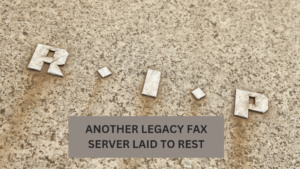As the speed of business continues to increase, organizations need of ways to simplify mobile communications. A new test conducted by the Massachusetts Institute of Technology and NASA discovered a new way to increase the speed, and distance, of global communications, according to the Optical Society.
Researchers from MIT's Lincoln Laboratory and NASA were able to create a data uplink between Earth and the moon that is more than twice as powerful as the standard connection in the U.S., reported Geekosystem.
While the Lunar Laser Communication Demonstration proved that there can be data communication in space that rivals connectivity enjoyed on Earth, the Lincoln Laboratory's Mark Stevens noted that sending data that far wasn't without its challenges.
"Communicating at high data rates from Earth to the moon with laser beams is challenging because of the 400,000 kilometer distance spreading out the light beam," explained Stevens. "It's doubly difficult going through the atmosphere, because turbulence can bend light – causing rapid fading or dropouts of the signal at the receiver."
The demonstration was able to transmit data the 238,900 km from the moon down to Earth while maintaining a download rate of 622 megabits per second, a faster rate than any radio frequency system. Data was also able to be transmitted from Earth to the moon at 19.44 megabits per second, faster than any radio frequency system ever used by a factor of 4,800 and quicker than some terrestrial telecom companies, iAfrica noted.
Communicating in space
The test was conducted from a ground terminal in White Sands, New Mexico, reported OSA. Four telescopes were used to send the uplink signal to the moon, with the hopes that more telescopes would increase the likelihood of one of the signals reaching the receiver. A laser transmitter fitted to each telescope sends information via coded pulses of invisible infrared light.
A receiver attached to an orbiting satellite intercepted the beams and collected the coded light with its own telescope. The light was then channeled to optical fibers, similar to those used on Earth, and amplified almost 30,000 times. The pulses of light was converted into electrical pulses by a photodetector and then translated into data bit patterns capable of transmitting messages.
When the signal originally left Earth, it carried a strength of about 40 watts. Only about a billionth of a watt was received by the satellite receiver, but according to Stevens, that is still more than ten times the strength needed to transmit data.
While data transmissions to the moon won't necessarily travel at warp speed, the moon is about 1.82 light seconds away, causing a connection ping to take a little more than 2.5 seconds. The uplink is a major step forward in communicating with astronauts in space stations and mobile communication in general.
Fax from anywhere with FoIP
Companies probably won't have to be faxing messages to space anytime soon, but being able to send important documents while in transit is a problem many organizations face. Business doesn't stop just because someone is traveling, and with fax over IP services, it doesn't have to.
FoIP allows faxes to be sent and received from anywhere with an Internet connection, be it a plane, train, automobile or even a space shuttle. Documents are received as an email and can be copied or forwarded to all interested parties. FoIP service providers like FaxCore utilize the cloud to store data in transit, ensuring sensitive business information is protected.
Enhance enterprise communication, collaboration and compliance efforts with a proven FoIP solution from FaxCore. Contact FaxCore today to learn more about their 'Partly-Cloudy' fax solutions.




